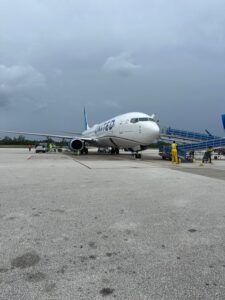
Do I Have to Fly to-or-from Canada for Montreal Convention Benefits?
Montreal Convention
If any part of the injured traveler’s trip included an international component, then the Montreal Convention for International Air Travel may apply. This means there are special procedures, potential limits on recovery, and the need to file in federal court.

The Montreal Convention, established in 1999, is an international treaty that protects international air passengers by establishing airline liability in cases of passenger death or injury. Over 100 countries have agreed to its terms, covering most international flights. The airlines benefit from greater certainty regarding the rules governing their liability across their international route networks. Since laws vary from country to country regarding negligently inflicted injury and reimbursement, the treaty was formulated to provide predictability to the international airline industry. By having a standardized set of rules, air carriers can better predict and insure against their exposure to losses during international travel. Under the Montreal Convention, air carriers are strictly liable for proven damages up to $128,821 Special Drawing Rights (SDR), a mix of currency values established by the International Monetary Fund (IMF), which is roughly equivalent to US $175,000.
Once an accident is proven, the airline is liable up to the amount specified in the treaty. For injuries that exceed this amount, the airline can attempt to avoid liability by proving that the accident was not caused by its negligence or that the incident was caused solely by the passenger or a third party not under the airline’s control.
To have a successful claim under the Montreal Convention, the passenger must prove:
- A. that the injury or death resulted from an “accident,” AND
- B. that the accident took place on board the aircraft OR
- C. “in the course of any of the operations of embarking or disembarking.”

In the 1985 United States Supreme Court case of Air France vs. Saks, 470 U.S. 392 (1985) the high court defined “accident” under the Montreal Convention as “an unexpected or unusual event or happening that is external to the passenger.” Because this definition is less than crystal clear, the courts have broadly defined the Treaty’s coverage to include: Aircraft hijackings, passengers assaulting each other failure by an airline to provide proper medical attention to an ill passenger on an international flight. However, self-inflicted harm, intoxication, and drug overdose may not satisfy the requirements of an “accident in the air.”
If you or someone you know has been injured on board an aircraft, on the runway getting on or off a jet, while on an international travel itinerary, or at the airport terminal, and there are questions about a passenger’s legal rights, please do not hesitate to contact us at 703–796–9055, or email frontdesk@landaulawshop.com.
